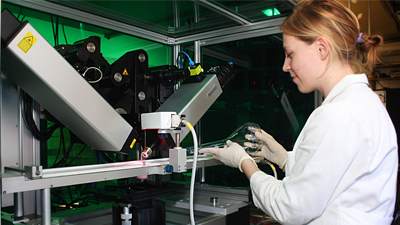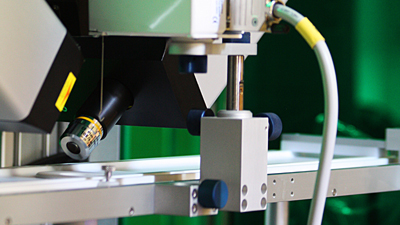Spectroscopic Nulling Imaging Elipsometer nanofilm_ep3se
Manufacturer: Accurion GmbH
Year: 2012
Financed from EU (ESRD) founds from the operation Center of Excellence in Nanoscience and Nanotechnology – CENN Nanocenter 2010 – 2013.
Optical ellipsometry is a non-destructive technique for investigation of surfaces, interfaces and thin films. It probes modifications of the polarization state of optical beam reflected from the sample. Imaging ellipsometer uses microscopic objectives to reduce the size of investigated surface region to the micrometer range. Our ellipsometer uses objectives with extra-long working distance, which provides measurements on surfaces of macroscopic objects. The magnified image of the sample is visualised in reflected light, which propagates through a set of selected polarization sensitive optical elements. The resulting “polarization filtered” image is detected by CCD camera with variable shutter timings and gain control. The system provides ellipsometric analysis with the lateral resolution of 1 μm. This allows the user to perform measurements on microstructured samples. Several regions of interest can be analysed at the same time.
Optical illumination of the sample takes place via monochromatic radiation (spectrally filtered light from Xenon Arc lamp with the bandwidth of 6 – 12 nm) with tuneable wavelength in the range from 365 nm (UV) to 1600 nm (NIR). Extension to the NIR region is a speciality of our system that makes it very suitable for investigations of semiconductor materials. Laser light source at λ = 658 nm can also be used for illumination and polarization analysis. One of the operation modes based on laser illumination is Brewster angle microscopy (BAM), which provides imaging of ultra-thin films and surface layers (molecular monolayers). In particular Lagmuir films on water surface and Langmuir-Blodgett (LB) films on solid substrates can be studied.
The system includes motorized computer controlled goniometer that provides tuning of incidence angle of optical beam in the range from 38 to 90 deg with angular resolution of 0.001 deg. The software enables automatic nulling and mapping procedures, image processing and data analysis by use of different thin film models.
Responsible person: prof. dr. Irena Drevenšek Olenik, +386 (0)1 477 3647, irena.drevensek@ijs.si
Equipment location: Laboratory in building B, Jožef Stefan Institute, Jamova c. 39, 1000 Ljubljana
Requested level of experience: use of the elipsometer is allowed for qualified operators only
Equipment reservation: you are obliged to use reservation system
Equipment accessibility: from Monday to Friday between 8 a.m and 4 p.m., or else in preceding accordance with the person in charge.

